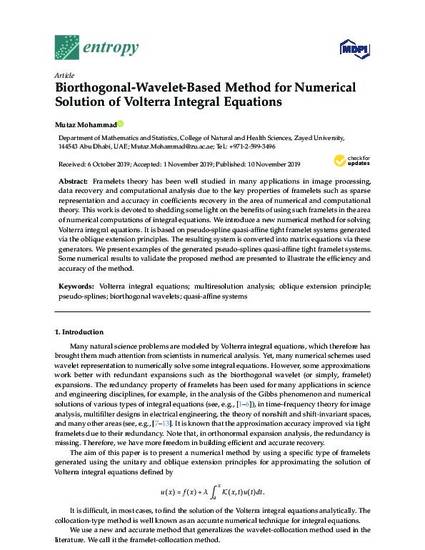
© 2019 by the authors. Framelets theory has been well studied in many applications in image processing, data recovery and computational analysis due to the key properties of framelets such as sparse representation and accuracy in coefficients recovery in the area of numerical and computational theory. This work is devoted to shedding some light on the benefits of using such framelets in the area of numerical computations of integral equations. We introduce a new numerical method for solving Volterra integral equations. It is based on pseudo-spline quasi-affine tight framelet systems generated via the oblique extension principles. The resulting system is converted into matrix equations via these generators. We present examples of the generated pseudo-splines quasi-affine tight framelet systems. Some numerical results to validate the proposed method are presented to illustrate the efficiency and accuracy of the method.
- Biorthogonal wavelets,
- Multiresolution analysis,
- Oblique extension principle,
- Pseudo-splines,
- Quasi-affine systems,
- Volterra integral equations
Available at: http://works.bepress.com/mutaz-mohammad/11/
